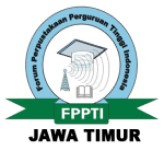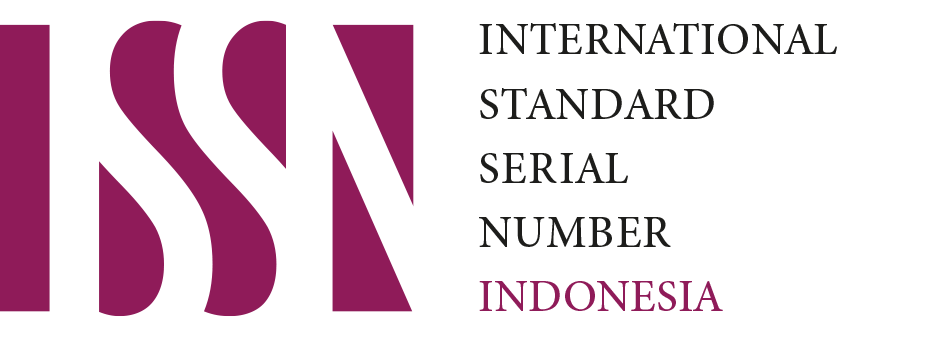The role of @literarybase X account in fulfilling information literation needs
Downloads
Background of the study: X is a social media used mainly by the public as a source of information and can fulfill its users' information needs, including the @literarybase account, which discusses literature and books. Through this, it is expected to increase information literacy skills through information search activities to meet the information needs of its users.
Purpose: This study aims to determine the role of auto-base @literarybase in meeting the information literacy needs of its followers.
Method: The method used is quantitative with survey techniques. Data was collected online through the distribution of Google form questionnaires to followers of the @literarybase account with a Likert scale as a measurement, and analysis was carried out descriptively.
Findings: The @literarybase account has played a role in meeting the information needs and training the information literacy skills of its followers. In content gratification, the @literarybase account fulfills the needs of information sharing and information seeking. In the gratification process, the @literarybase account fulfills entertainment, pass time, escape, habit, and self-expression needs. In social gratification, the @literarybase account fulfills the information needs through social interaction. Finally, regarding technology gratification, the @literarybase account fulfills information needs in the form of relative advantage.
Conclusion: The @literarybase account has played a role in meeting information needs and training information literacy skills for its account followers. However, several aspects still need to be fully met, such as the need for self-document in content gratification, the need for campaigns in process gratification, the need for status seeking in social gratification, and the need for social compliance in technology gratification.
Downloads
Afzal, W. (2017). Conceptualisation and Measurement of Information Needs: A Literature Review. Journal of the Australian Library and Information Association, 66(2), 116–138. https://doi.org/10.1080/24750158.2017.1306165
Anugrahwisesa, A., & Rina, N. (2019). Efektivitas Komunikasi Akun Twitter @Humasbdg Terhadap Pemenuhan Kebutuhan Informasi Masyarakat Kota Bandung. EProceedings of Management, 6(3).
Bayu, D. (2022). Remaja Paling Banyak Gunakan Internet di Indonesia pada 2022. DataIndonesia.Id.
Bunga, S. M. F., & Rachman, M. A. (2022). Peran akun twitter @literarybase dalam meningkatkan minat baca followersnya. Berkala Ilmu Perpustakaan Dan Informasi, 18(1), 98–112. https://doi.org/10.22146/bip.v18i1.2375
Cahyono, A. S. (2016). Pengaruh Media Sosial Terhadap Perubahan Sosial Masyarakt di Indonesia. Publiciana, 9(1).
Creswell, J. W. (2014). Research design: qualitative, quantitative, and mixed methods approaches (4th ed.). SAGE Publications.
Dindar, M., & Yaman, N. D. (2018). #IUseTwitterBecause: content analytic study of a trending topic in Twitter. Information Technology and People, 31(1), 256–277. https://doi.org/10.1108/ITP-02-2017-0029
Dwiwina, R. H., & Putri, K. Y. S. (2021). The Use of the Auto Base Accounts on Twitter as A Media for Sharing Opinions. Ultimacomm: Jurnal Ilmu Komunikasi, 123–144. https://doi.org/10.31937/ultimacomm.v13i1.1603
Fauziyyah, S. N., & Rina, N. (2020). Literasi media digital: efektivitas akun Instagram @infobandungraya terhadap pemenuhan kebutuhan informasi followers. MEDIALOG: Jurnal Ilmu Komunikasi, 3(1), 13–24.
Finaka, A. W. (2017). Pengguna Media Sosial di Indonesia #19. Indonesiabaik.id.
Gao, B. (2023). A uses and gratifications approach to examining users' continuance intention towards smart mobile learning. Humanities and Social Sciences Communications, 10(1), 1-13.
Garg, M. (2016). Information Seeking Behaviour Models: A Brief Introduction. International Journal of Library and Information Studies, 6(1). www.ijlis.org
Ginting, C. B., & Nasionalita, K. (2021). Pengaruh Penggunaan Media Online Terhadap Pemenuhan Kebutuhan Informasi (Survei Pada Followers Akun Instagram @medantalk). E-Proceeding of Management, 8(5).
Huang, Y. K., & Yang, W. I. (2008). Motives for and consequences of reading internet book reviews. Electronic Library, 26(1), 97–110. https://doi.org/10.1108/02640470810851770
Iswahyuni, Prihatiningsih, W., & Surahmad. (2017). Penggunaan Internet Sebagai Media Informasi Oleh Mahasiswa UPN "Veteran” Jakarta. Journal Signal, 5(2). http://www.goechi.com/newsletter.html.
Iswara, A. F. (2022). Pengaruh media sosial Twitter terhadap pemanfaatan koleksi iPusnas: Kajian terhadap pengikut akun Literary Base. Universitas Islam Negeri Maulana Malik Ibrahim.
Juditha, C. (2015). Trending Topic Phenomenon on Twitter: Discourse Analysis Of Tweet #SaveHajiLulung. Jurnal Penelitian Komunikasi Dan Pembangunan, 16(2), 138–154.
Kala, Y., & Ulina, R. (2022). Pengaruh Penggunaan Aplikasi Ipusnas Pada Pengikut @Literarybase Di Twitter Terhadap Minat Membaca Buku Digital. Medium, 10(1), 200–213.
Krasonikolakis, I., & Chen, C. H. S. (2023). Unlocking the shopping myth: Can smartphone dependency relieve shopping anxiety?–A mixed-methods approach in UK Omnichannel retail. Information & Management, 60(5), 103818.
Liu, Z., & Jansen, B. J. (2013). Almighty Twitter, what are people asking for? Proceedings of the American Society for Information Science and Technology, 1–10.
Logan, A. P., LaCasse, P. M., & Lunday, B. J. (2023). Social network analysis of Twitter interactions: a directed multilayer network approach. Social Network Analysis and Mining, 13(1). https://doi.org/10.1007/s13278-023-01063-2
Malodia, S., Dhir, A., Bilgihan, A., Sinha, P., & Tikoo, T. (2022). Meme marketing: How can marketers drive better engagement using viral memes?. Psychology & Marketing, 39(9), 1775-1801.
McLeod, S. (2023). Likert Scale Definition, Examples and Analysis. Simply Psychology. https://simplypsychology.org/likert-scale.html
Meier, F., & Elsweiler, D. (2014). Personal information management and social networks re-finding on Twitter. Proceedings of the 5th Information Interaction in Context Symposium, 339–341.
Mejova, Y. (2018). Information sources and needs in the obesity and diabetes twitter discourse. ACM International Conference Proceeding Series, 2018-April, 21–29. https://doi.org/10.1145/3194658.3194664
Nasution, L. M. (2017). Statistik Deskriptif. Jurnal Hikmah, 14(1).
Nurhadi, Z. F. (2017). Model komunikasi sosial remaja melalui media twitter. Jurnal Aspikom, 3(3), 539–549.
Panjaitan, T. K. S., Tayo, Y., & Lubis, F. M. (2020). Fenomena Penggunaan Akun Pseudonym dalam Memenuhi Motif Identitas Pribadi pada Pengikut Autobase @karawangfess di Twitter. Jurnal Komunikasi, 8(2), 161–172.
Pattah, S. H. (2014). Literasi informasi: peningkatan kompetensi informasi dalam proses pembelajaran. Khizanah Al-Hikmah: Jurnal Ilmu Perpustakaan, Informasi, Dan Kearsipan, 2(1), 108–119.
Puspitadewi, I., Erwina, W., & Kurniasih, N. (2016). Pemanfaatan "Twitter Tmcpoldametro” Dalam Memenuhi Kebutuhan Informasi Para Pengguna Jalan Raya. Jurnal Kajian Informasi & Perpustakaan, 4(1).
Rezeki, S. R. I., Restiviani, Y., & Zahara, R. (2020). Penggunaan Sosial Media Twitter Ddalam Komunikasi Organisasi (Studi Kasus Pemerintah Provinsi DKI Jakarta Dalam Penanganan Covid-19). Journal Of Islamic and Law Studies, 4(2).
Riani, N. (2017). Model perilaku pencarian informasi guna memenuhi kebutuhan informasi (studi literatur). Publication Library and Information Science, 1(2), 14–20.
Saputra, A. (2019). Survei penggunaan media sosial di kalangan mahasiswa kota padang menggunakan teori uses and gratifications. Baca: Jurnal Dokumentasi Dan Informasi, 40(2), 2017–2216.
Shinta, V. R., Johan, R. C., & Halimah, L. (2023). Literacy class: Instructional design at high school. Record and Library Journal, 9(1), 56–65. https://doi.org/10.20473/rlj.V9-I1.2023.56-65
Sugiyono. (2019). Metode Penelitian Kuantitatif, Kualitatif, dan R&D. CV. Alfabeta.
Suharso, P. (2019). Pemanfaatan Drone Emprit dalam Melihat Trend Perkembangan Bacaan Digital melalui Akun Twitter. Anuva: Jurnal Kajian Budaya, Perpustakaan, Dan Informasi, 3(4), 333–346.
Syafitri, N. K., Rullyana, G., & Ardiansah, A. (2020). Autobase @collegemenfess, A Twitter Account Used as Information Retrieval Tool. Khizanah Al-Hikmah: Jurnal Ilmu Perpustakaan, Informasi Dan Kearsipan, 8(2), 161–172. https://doi.org/10.24252/kah.v8i2a6
Tawaf, & Alimin, K. (2012). Kebutuhan Informasi Manusia: Sebuah Pendekatan Kepustakaan.
Widiyastuti. (2016). Perbandingan Teori Perilaku Pencarian Informasi Menurut Ellis, Wilson, dan Kuhlthau. Jurnal Pustaka Budaya, 3(2).
Young, S. W. H., & Rossmann, D. (2015). Building Library Community Through Social Media. Information Technology and Libraries.
Yusuf, M. (2017). Metode Penelitian: Kuantitatif, Kualitatif, dan Penelitian Gabungan. Kencana.
Zalmi, F. N. H. (2017). Pemenuhan kebutuhan informasi dalam perkumpulan kaum suku Jambak Dt. Maruhun Basa Kabupaten Agam. Shaut Al-Maktabah, 8(2). https://doi.org/10.15548/shaut.v9i2.120
Copyright (c) 2023 Nisrina Amani, Angga Hadiapurwa, Nanda Khaerunnisa Syafitri, Hafsah Nugraha

This work is licensed under a Creative Commons Attribution-ShareAlike 4.0 International License.
Record and Library Journal by Unair is licensed under a Creative Commons Attribution-ShareAlike 4.0 International License.
1. The journal allows the author to hold the copyright of the article without restrictions.
2. The journal allows the author(s) to retain publishing rights without restrictions
3. The legal formal aspect of journal publication accessibility refers to Creative Commons Attribution Share-Alike (CC BY-SA).
4. The Creative Commons Attribution Share-Alike (CC BY-SA) license allows re-distribution and re-use of a licensed work on the conditions that the creator is appropriately credited and that any derivative work is made available under "the same, similar or a compatible license”. Other than the conditions mentioned above, the editorial board is not responsible for copyright violation.



 57201398420
57201398420

























